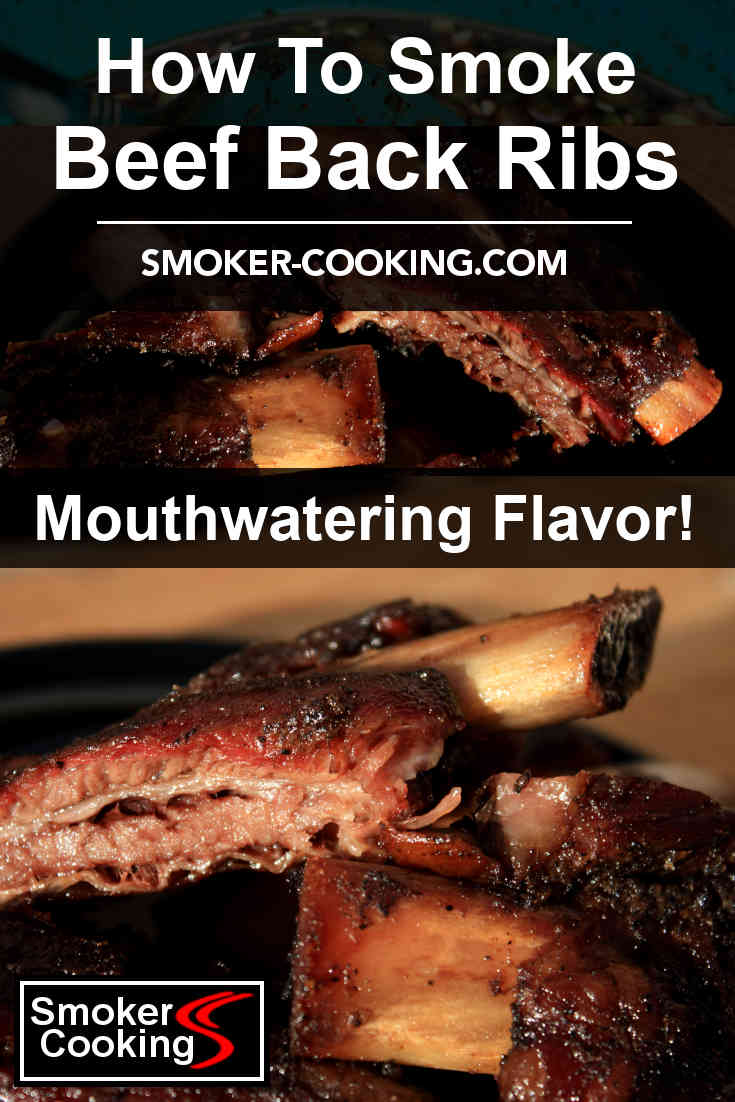Smoking Beef Back Ribs That Are Moist and Tender
Would you like to know how to smoke beef back ribs? These are a whole different animal compared to pork ribs...in more ways than one.
Beef ribs don't have the popularity that pork ribs enjoy, even though they can be delicious when seasoned and smoked to their glorious state of mouthwatering perfection.
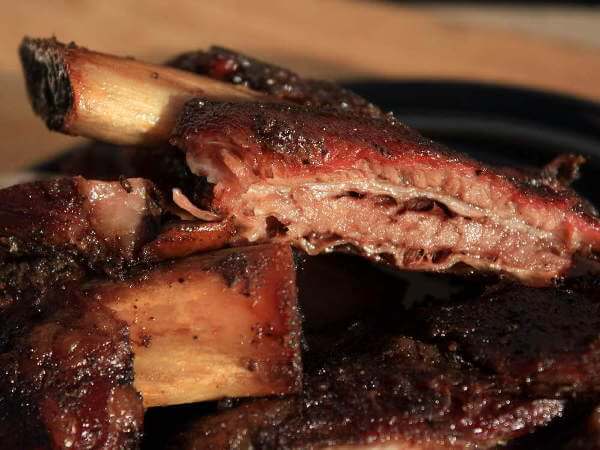
They used to be fairly inexpensive, but because of higher beef prices they're not the bargain they once were. Still, they are typically one of the least expensive cut of beef you can find.
I really miss the days when they could be found for 99 cents a pound.
A complete rack should include seven bones, though they're often found to have from six to eight bones per rack. They are cut from the upper part of the steer's rib cage, which is right next to the tenderloin.
That's part of the reason these beauties can be such a flavorful, tender treat.
Smoking Beef Back Ribs: The Basics
Smoking beef ribs isn't really all that difficult, but it
requires several steps to accomplish. And it can take some time. With a
smoker operating in the 225˚ F to 250˚ F range, it can take from six to
eight hours for the ribs to reach full tenderness. And some slabs might
even take longer than that, so patience is important.
- Buy the right ribs. Be choosy about what you're spending your cash on. There's quite a bit of variation in the quality of beef ribs.
- Prep the ribs. Removing the fell and excess fat makes all the difference in the world!
- Season well. Back ribs have lots of flavor, so if you want to spice them up, they can handle it.
- Smoke 'em for hours. It could take 6 to 8 hours… and sometimes longer, to break down the connective tissues, melt the fat, and free up the great beefy flavor.
Search Out The Meatiest Slabs You Can Find
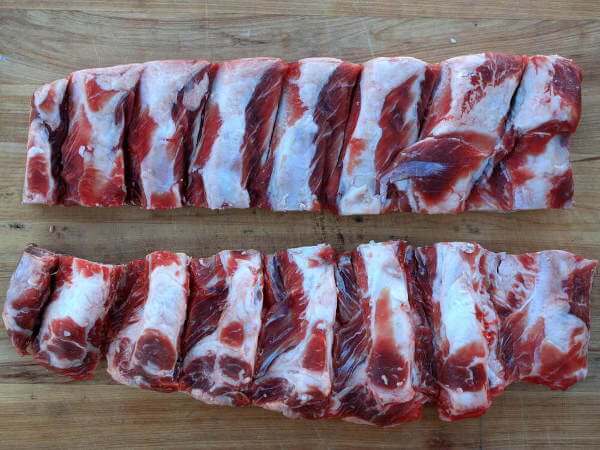
When you're at the meat cooler, don't just grab the first slabs of ribs you see. Be selective. At the large chain stores, the beef back ribs have invariably been robbed of a lot of the meat. You'll see that meat has been cut and scraped from between the rib bones, and some slabs will be worse than others.
Go for the meatiest slabs you can find. Ring the bell and talk to the butcher. He or she might be able to set you up with something better than you see in the case.
You might have better luck at the local butcher shop. Tell your friend (the butcher…if he's not your friend, make it so) that you are smoking beef ribs and you want good meaty slabs.
Preparing Beef Back Ribs For The Smoker
What's next? The back ribs will need a bit of prep work before they start smoking. Beef ribs have a tough membrane covering the bony side that needs to be removed.
The membrane, or fell, is a rubbery mouthful if left on the ribs…not very appetizing. In addition, the fell is a barrier that prevents spice and smoke flavor from reaching the meat.
To remove the fell, slip a butter knife or a screwdriver under the membrane and pry up a flap. Using a paper towel, grip the loosened flap of membrane and peel it off.
With the membrane removed, you can now remove the large fat deposits on the surface of the ribs. Don't worry about the small pieces of fat since they'll melt off as the ribs smoke.
When both sides of the rack have been cleaned up, it's time to pull out your favorite beef back ribs recipe.
Seasoning The Ribs With Dry Rub or Marinade
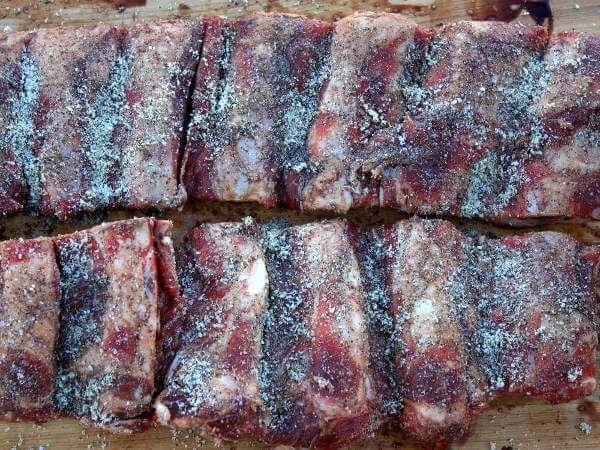
They can be coated with a dry rub for or soaked in a marinade, whichever you prefer. An good marinade will add a lot of flavor.
Vinegar, orange or lemon juice, and even Coca Cola are all acidic and can be used in your marinade mixture. Spices, herbs and veggies can be included to up the flavor of your ribs.
Dry rubs may contain salt, spice, herbs, and sugar. Allowing the ribs to rest after applying the seasoning gives time for it to be absorbed into the meat. If you don't have time to wait, go ahead and put the ribs in the smoker immediately after they're seasoned with dry rub.
But it's best to wrap them in plastic wrap and let them soak up that rub flavor for at least an hour. And if you can prep and season the ribs a day ahead of time, all the better. Keep the raw, seasoned beef ribs in the refrigerator, overnight or up to two days if you like.
Baste The Ribs Before Seasoning And The Rub Stays In Place
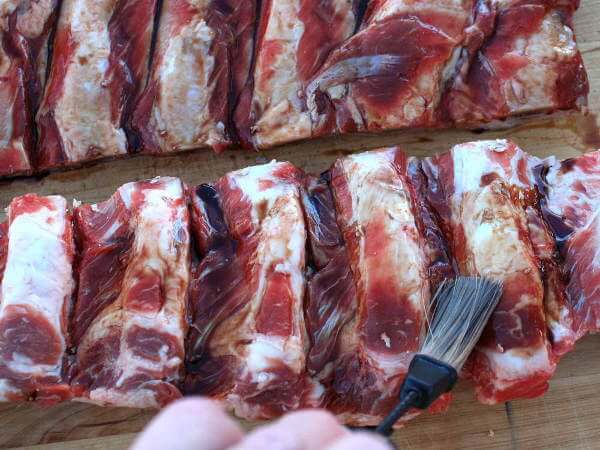
To help the dry rub adhere to the ribs, you can brush on a coat of liquid before seasoning. On the ribs in the above picture, I used a combination of Worcestershire and soy sauces to wet the ribs prior to rubbing.
Smoking Beef Back Ribs
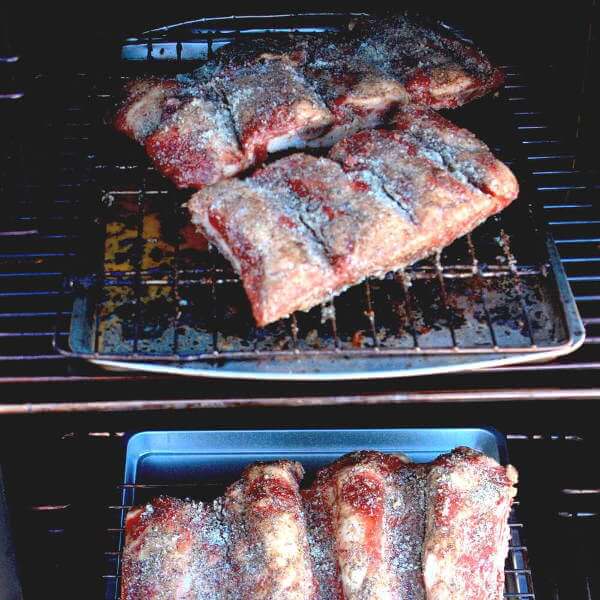
The tough connective tissue found in back ribs needs a lot of cooking time to break down and melt. And that's where a lot of the great flavor originates. If the ribs are still tough when you eat them, you're missing out on much of the flavor.
I've cooked beef ribs that have taken eight hours to become tender. Every slab is unique and has its own level of toughness that has to be cooked out. Identical looking racks don't necessarily become tender in the same amount of time.
Try to keep your smoker's temperature at 225˚ F, but no hotter that 250˚F. Higher smoking temps will cause the meat fibers to contract as they cook, squeezing out the juices. The ideal temperature range for smoking beef ribs is from 225˚F to 235˚F.
If you can find oak chips or chunks to use as smoker wood, that would be a great choice. Pecan or fruit wood chips would also work well.
Two 1/2 cup additions of wood chips during the first hour of smoking will give the ribs a subtle, smoky flavor. Give the ribs another 1/2 cup of wood chips if you want more smoky flavor.
I've used mesquite chips to smoke beef ribs, but because of the intense flavor of the smoke, use only half the amount you'd use of other woods, a total of 1/2 cup split into two additions.
Wrap The Ribs In Foil To Decrease Smoking Time and Prevent Drying
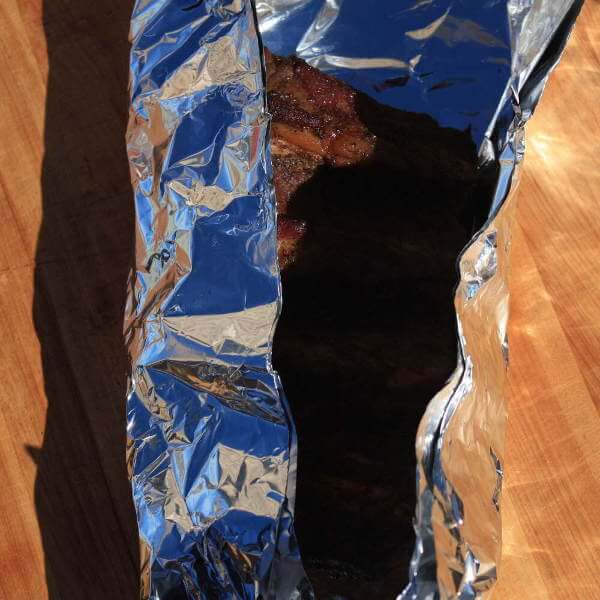
To shorten the cooking time, wrap the ribs in aluminum foil after three hours of cooking in the smoker. Place them back in the smoker (or in a 250 degree Fahrenheit oven) for three more hours. Remove the foil and check for doneness.
If they are still a little tough, re-wrap them and cook them a bit longer. With the foil removed, slather on some sauce and enjoy!
And there's no need to use smoker wood while the ribs are foil-wrapped, so save those chips for your next smoker adventure.
When your smoking ribs are almost done, you could baste them with a thinned down barbecue sauce, or a mopping sauce. There are many variations you could try. Something as simple as apple juice works. Or a concoction of ten different ingredients may be the ticket.
It all depends upon the flavor that you want your beef back ribs to have. Be aware that a sugary-sweet basting sauce or liquid can easily burn, so apply it only during the last half hour of smoking.
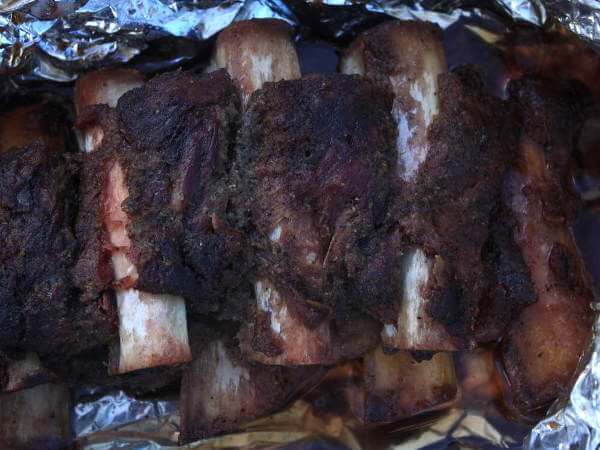
Congratulations! You just whipped up some great smoked beef ribs. Your ribs are done to perfection and it's time to munch! You'll need to slice the rack into individual ribs…meat lollipops, as I like to call 'em.
Depending upon how meaty the beef back ribs are, you can figure on needing two-to-four per person. If you serve a lot of filling side dishes alongside the ribs, you might be able to get by with one or two apiece.
But you know? If you’re anything like me, you won't be satisfied with less that five or six! Smoke accordingly and your guests and family will be happy and full!
- You Are Here: Home >
- Beef Recipes >
- Beef Back Ribs
